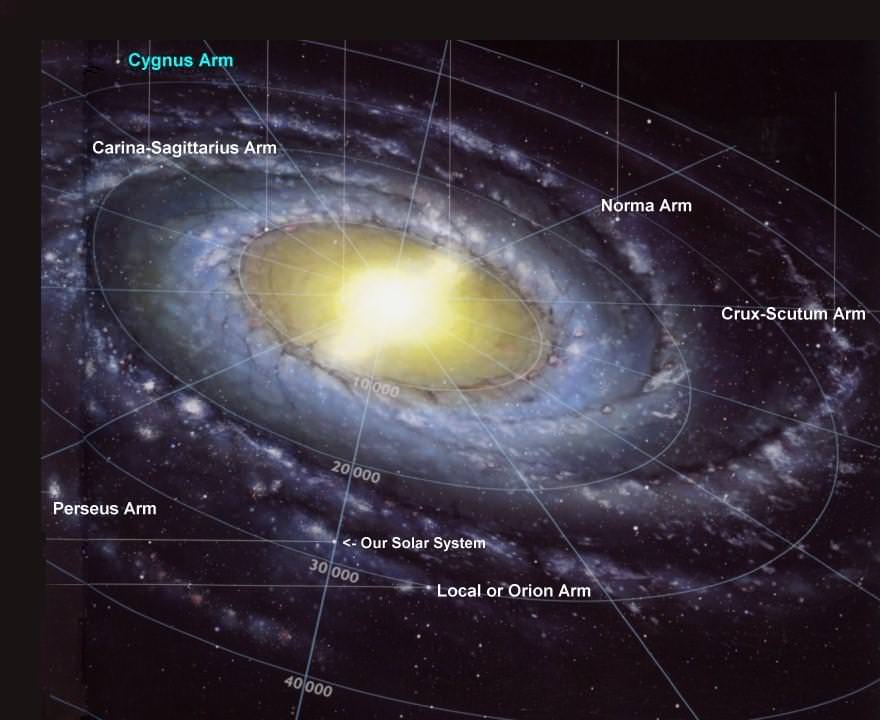[/caption]
Were you wondering what galaxy is the Earth in? You’ll probably recognize the answer: it’s the Milky Way Galaxy.
If you go to a dark spot, away from the bright city lights, and look up, you should be able to see the Milky Way as a cloudy band stretching across the sky. It really does look like spilt milk spread across the sky. But if you take a telescope and examine it more closely, you’ll see that the clouds are actually the collective light from thousands of stars.
Since we’re embedded inside the Milky Way, we’re seeing our home galaxy edge-on, from the inside. To get a better idea, grab a dinner plate and take a look at it edge on, so you can’t see the circular shape of the galaxy. You can only see the edge of the plate.
The Milky Way is an example of a barred spiral galaxy. It measures approximately 100,000 light years across and it’s only 1,000 light years thick; although, it’s more thick at the core where the galaxy bulges out. If you could fly out of the Milky Way in a rocket and then look back, you’d see a huge spiral shaped galaxy with a bar at the center. At the ends of this bar, there are two spiral arms which twist out forming the structure of the Milky Way.
The Earth is located in the Solar System, and the Solar System is located about 25,000 light-years away from the core of the galaxy. This also means that we’re about 25,000 light-years away from the outer edge of the Milky Way. We’re located in the Orion Spur, which is a minor arm located in between the two major galactic arms.
If you’d like more information on the Milky Way, check out NASA’s Starchild info on the Milky Way, and here’s more info from the WMAP mission.
We’ve written many articles about the Milky Way for Universe Today. Here’s an article with facts about the Milky Way, and here is a map of the Milky Way.
We’ve also recorded several episodes of Astronomy Cast about the Milky Way. Listen here, Episode 99: The Milky Way.

